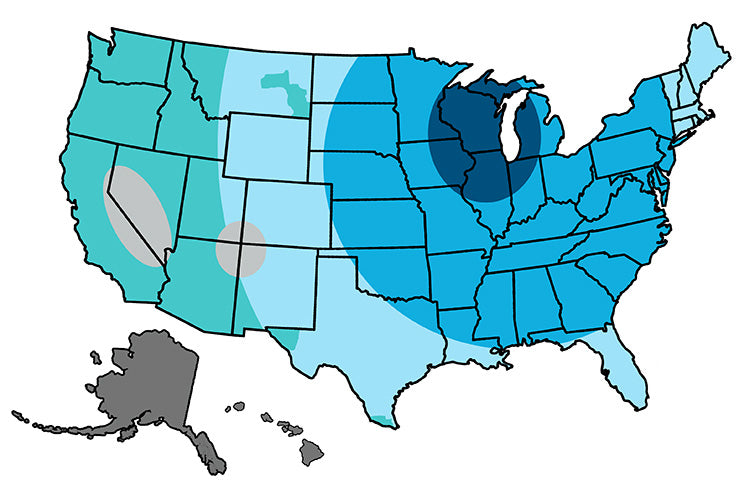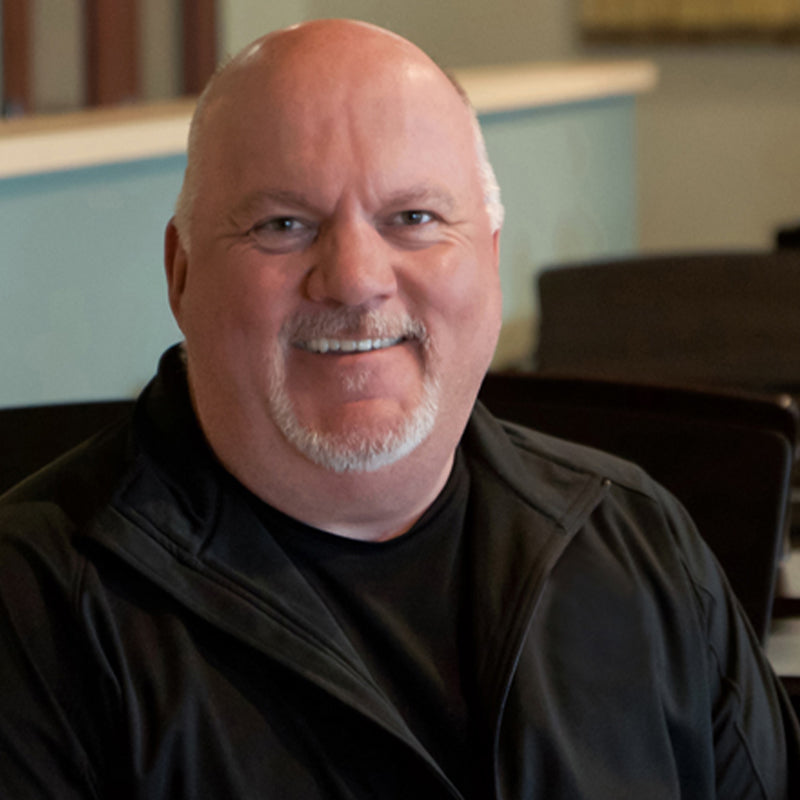Waldorf Blofeld Desktop Synthesizer Module
Waldorf Blofeld is offspring from a noble house, the little synthesizer machine with the big and evil sound. This synthesizer offers all the unique qualities that made Waldorf a truly legendary brand. The engine inside the heavy duty, full metal chassis of Blofeld delivers the same fat and rich sound that so many Waldorf users worldwide love when they play their Pulse, Q, Q+, Micro Q, Microwave, Microwave II/XT or even the flagship Wave.
Yes, you heard right: Blofeld is not only capable of producing the warm, organic analog sounds known from the Q synthesizer line, it also sports a wavetable engine like its predecessors with 'Wave' in their names. This unique synthesis system is based upon the revolutionary PPG Wave synthesizers of the early 80s, so when you listen to Blofeld for the first time you will instantly recognize those edgy, hard-hitting and bell-like timbres that have been an integral part of so many world hits from the PPG era onwards and have become increasingly popular once more. In fact, it is amazing to realize that nowadays this complex technology fits into such a slim and elegant device, and for a price nobody would have imagined back in the days of its predecessors.
Oscillators
Each of the three oscillators offers authentic circuit models of analog waveforms: pulse with variable pulsewidth, sawtooth, triangle and, as found in relatively few analog synthesizers these days, sine wave. Furthermore, oscillators 1 and 2 feature the two wavetables that were introduced by the Waldorf Q and appeared shortly thereafter in the Micro Q series. Not only that, Blofeld includes all ROM wavetables from the mighty flagship Waldorf Wave as well as Microwave II/XT. Plus, lo and behold, the desperately requested 'upper wavetable' from PPG Wave! For the first time in the history of Waldorf and PPG, each of these two oscillators can have its own wavetable.
What's more, you have control over the brilliance of these wavetables, which is especially important for waves with lots of harmonics in the bass end. You decide if you prefer pure and perfect harmonics or the same edgy timbre you know and love from the earlier Waldorf and PPG synthesizers. Brilliance also affects the sawtooth and pulse oscillator models, ranging from warm and soft (for those typical LA string pads) to the hard shapes you need for punchy and biting bass sounds. Note, though, that Brilliance is not a simple filter applied after the oscillators; rather, the oscillator model itself is modified.
Each of the three oscillators can be frequency-modulated by any of the other oscillators, the noise generator or one of the LFOs. With low FM amounts you can add a little dirt to the oscillator sound; with higher amounts you get typical FM effects. On top of all that, oscillator 2 can be hard-synced to oscillator 3.
Ring modulation
Oscillators 1 and 2 can be ring modulated to create bell-like metallic sounds and eerie sound effects as well as pumping basses and leads. The noise generator delivers white noise that can be filtered lowpass or highpass, depending on the noise color setting. The three oscillators, the ring modulator and the noise generator can be freely mixed into filter 1 and filter 2. This allows fine control over the harmonic content of each of the tone generators.
Filters
Blofeld has two multimode filters per voice that can be routed in series or in parallel. Each filter has its own pan parameter for easy creation of stereo sounds. The selection of filter types includes low pass, band pass, high pass and notch (band reject), each with 12dB/oct or 24dB/oct slope. The filter models are based on several famous Waldorf filter algorithms found in all their products. They offer resonance up to self-oscillation as well as frequency modulation (filter FM). Furthermore, Blofeld features the same comb filter types (with positive and negative feedback) first introduced in the Waldorf Q. These can be used to thicken bass and pad sounds or to create percussive, string or flute sounds reminiscent of physical modeling.
Overdrive, saturation, distortion, shaping
Blofeld offers a freely controllable drive behind each filter with more than a dozen curves. These include such standards as the drive from the Q and Micro Q, low/medium/hard saturation, tube saturation, two types of electric pickups, a rectifier, digital overflow as well as esoteric stuff such as 'binary distortion,' a sinusoidal waveshaper and even a distortion controlled by oscillator 1. And because Blofeld has two filters that can be routed in series, you can control the timbre of the drive output of filter 1 by dampening or emphasizing certain frequencies with filter 2.
Effects
Blofeld has two effect slots with various types. In Multimode, the first effect slot is available per part, while the second one is used for all 16 parts (i.e., global) with controllable mix levels. Part 1 determines the settings of the second effect. The first effect slot offers modulation effects such as chorus and flanger as well as a combined type called 'Triple FX.' The latter gives you several effects at once, but with a reduced parameter set. The second effect slot offers all the same types as the first, but with the addition of delay, clocked delay and reverb.
Envelopes
Four envelopes with different types and trigger modes affect any sound parameters you choose. Each envelope can be either polyphonic or single trigger. This is especially interesting with the monophonic voice allocation, as the filter envelope can be set to be triggered only by the first note(s) while the amp envelope is triggered on each note — think 'organ percussion register,' for instance. The envelope types include the standard ADSR as well as an enhanced ADSR variant with controllable attack level and two decay and sustain stages, two different loop envelopes and a 'one shot' envelope. The loop types can be used to act as additional LFOs, while the 'one shot' is perfectly suited for percussion sounds, which typically ignore the note release.
LFOs
Each of the three LFOs offers sine, triangle, square and sawtooth waveforms, plus sample & hold and random. LFOs can be synchronized to MIDI clock, they can be polyphonic or monophonic, can be reset on key trigger to a freely definable phase, and the speed can be scaled by MIDI note (key follow). There are separate delay and fade in/out parameters for, say, delayed vibrato (positive fade values) or a burst of vibrato at the start of each note (negative fade values). One important feature of the Blofeld LFOs is that higher rates reach well into the audio frequency range, thus making them useful extra FM sources. There are two basic modes: either linear FM as seen in classic digital synths, or logarithmic FM, which is primarily the domain of analog modular systems.
Modulations
Here's where the real Waldorf power lies. Each and every instrument designed and built by Waldorf lets you connect dozens of modulation sources to all the important sound generation parameters. Individual or multiple oscillator pitches, their pulsewidths and waveforms, their levels and filter-balances, FM modulation amounts, individual filter cutoff and resonance, filter FM amounts and stereo panning, or just the good old sound output level — everything can be controlled from internal modulation sources or from a variety of MIDI messages such as velocity, keytrack, continuous controllers (including wheels, breath and foot controllers), etc.
You can of course 'modulate the modulators,' i.e., control LFO speeds and individual envelope rates and levels, but in Blofeld you can even specify that these sources modulate themselves — recursive modulation! For instance, modulating an envelope rate by the same envelope (or another one) can alter the shape of the slope dramatically from the standard exponential curve to linear to inverse exponential.
Modifiers
And how many slots do you get in the mod matrix? Two? Three? Four? No, we're talking big here: you get 16 freely definable slots plus all the pre-routed modulation destinations such as pitch, oscillator frequency and pulse width modulation, filter cutoff, pan and amp level. Don't forget that the filter envelope is already routed to filter 1 and 2 cutoff, and the amp envelope is routed to the amp level. This makes a total of 33 simultaneous connections.
What if you want something really really crazy, like controlling a pitch vibrato done by LFO 3 with the modulation wheel. Although there are a few such composite modulation sources such as 'LFO1*MW' (LFO 1 controlled by modulation wheel) and 'LFO2*Press' (LFO 2 controlled by monophonic aftertouch), there's nobody doing the 'LFO3*MW' thing for you. But don't worry, that's where the Modifiers come into play: in seconds you can set up a new modifier with the two sources set to LFO 3 and modulation wheel, and the 'operation' set to '*' (multiply). You can use such custom-made modulation sources in any of the modulation slots described above.
Okay, maybe you are more the regular musician who simply wants to perform a binary OR between two modulation sources? Okay, go for it! This operation is just one of several at your disposal.
Arpeggiator
Blofeld's arpeggiator features variable clock divisions from 1/64 triplets to more than 1,000 bars, with variable swing/shuffle and a range of up to 10 octaves. Up, down and alternate modes, selectable play order from low to high note, low to high velocity, as played or reversed, variable note length, different velocity modes. And hold or 'one shot' if you like.
But more importantly, it has the most powerful pattern editor we have ever seen. You can set each step to either play the note it would do so anyway, to pause, to play the previous note again, play the first or the last note, play those together, play a chord consisting of all held notes or a randomly selected note.
Then you can adjust the accent of each step (including silence), activate or deactivate glide for each step, set the timing to play a step ahead or behind its nominal time, and finely adjust the note length between short staccato and full legato.
No wonder this arpeggiator had great reviews when it first appeared in the Waldorf Q. It will take you straight to arpeggiator heaven, as has already happened to thousands of Waldorf customers. Dig it!
License SL (sold separately)
License SL (sold separately) greatly expands the sonic potential of every Blofeld desktop. With this license installed, 60MB of sample flash memory become available for factory and user samples. These samples and multisamples go through Blofeld's vast synthesis engine just like the standard oscillators. And like the oscillators, samples can be used as an FM source or destination. You can also apply ring modulation, dual filters and overdrive to go far beyond traditional sample playback technology. License SL comes with an extensive set of factory samples.
| Specification | Value |
|---|---|
| SKU | WAL-BLOFELD |
| Vendor | Waldorf |
| Analog Digital | Digital |
| Built In Speakers | No |
| Included From Manufacturer | Power Supply |
| Number of Keys | None |
| Midi | In and USB |
| Mono Poly | Polyphonic |
| MPN | BLOFELD |
| Arpeggiator | Yes |
| Audio File Playback | No |
| Control Connections | None |
| Onboard Controllers |
7 endless stainless steel knobs 5 buttons |
| Effects |
Chorus Flanger Phaser Overdrive Triple FX: sample & hold, ring modulation, chorus Delay Clocked delay Reverb |
| Audio Inputs | None |
| Audio Outputs |
1/4" stereo unbalanced 1/4" stereo headphone out |
| Internal Storage Capacity | 60MB sample memory with optional License SL sample option (sold separately) |
| Key Action | n/a |
| Multitimbral Capability | 16 parts |
| Oscillators per Voice | 3 |
| Product Weight | 2.87 lbs. |
| Programs/Presets | Over 1,000 sounds |
| Sampling | Sample playback with optional License SL sample option (sold separately) |
| Sequencer | No |
| Speakers | None |
| USB Port (to Host) | MIDI;System Updates |
| Voices of Polyphony | Up to 25 |
| Width | 11.97" |
| Depth | 5.2" |
| Height | 2.13" |
Waldorf 1-year Limited Warranty
Waldorf Music provides a one-year warranty covering defects in material and workmanship from the original purchase date. During this period, the company will repair or replace faulty products at no cost, provided the defect is confirmed by Waldorf Music or an authorized service center. Customers must contact their dealer or distributor before sending the product, which should be shipped in its original packaging with insurance. The warranty excludes damage from abuse, improper conditions, or unauthorized repairs and covers only defects that occur under normal operating conditions. More information can be found on Waldorf's website.
Ground shipping is FREE for all orders $99 and up.















YOUR MUSIC TECHNOLOGY STORE SINCE 1984